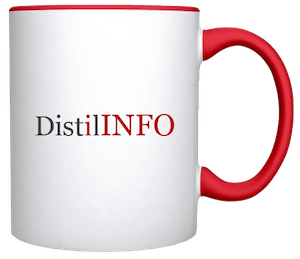Deep learning strategies could help develop personalized predictions for stress levels, offering providers more insight into patient wellness.
In the quest to get ahead of costly health events for high-risk individuals, identifying elevated levels of emotional and psychological stress may be just as important as documenting more traditional clinical symptoms.
Chronic stress is known to contribute to high blood pressure, respiratory issues, poor sleep, and blood sugar issues, yet providers typically do not have data-driven insights into how stress will affect overall health on a personalized level.
Deep learning techniques may be able to change that, indicates a new study from Columbia University and Northwell Health, published in the Journal of Medical Internet Research.
Want to publish your own articles on DistilINFO Publications?
Send us an email, we will get in touch with you.
Using a mix of wearable sensor data and qualitative responses from participants, the team developed neural network models that could predict levels of stress with between 75 percent and 85 percent accuracy.
The models take into account non-clinical factors, such as the duration of daylight, the weather, and individual activity, to offer personalized insights into how a person’s surroundings and actions influence their stress levels on a daily basis.
“Deeper knowledge of the day-to-day effects of both weather and physical activity on stress can be valuable for creating personalized stress-reduction interventions on a just-in-time basis,” said the team.
Pooling data or taking averages of data may not accurately account for different responses from individuals to the same stimulus, they continued.
“For example, hot weather may reduce stress for some participants, but increase stress for others,” said the researchers.
Instead of relying wholly on nomothetic analytics approaches, which use data pooling and averages to come to conclusions, the team also employed an ideographic approach, which relies on creating individualized models for each participant.
Ideographic analytics require a robust dataset to draw upon, which may be difficult for some participants to develop in an uncontrolled setting. To overcome this challenge, the team started with a nomothetic model, then switched to an ideographic approach once enough data had been collected for each participant.
They found that the synthesis of these approaches produced greater predictive accuracy, especially as more data for each participant became available.
To begin the study, researchers collected their data by using a FitBit to continuously monitor the activities of a group of participants for one year, and layered on qualitative answers to structured questions about stress.
“Stress was measured using an end-of-day text message survey on the participant’s own iPhone or Android phone, with the question ‘Overall, how stressful was your day?’” the team explained.
“Each evening, the participant was also asked, ‘Overall, how stressful do you think tomorrow will be?’ Each morning, the participant responded to the questions ‘How stressful do you expect today to be?’ and ‘How likely are you to exercise today?’”
The team examined data from three-day periods to predict the next day’s stress level. Three-day periods with missing inputs were excluded from the analysis.
When participants missed recording an input, they were more likely to have a higher stress rating the following period than people who did not miss a day, indicating that the presence or absence of data itself could be an indicator of personal stress and ability to adhere to protocols.
“The most frequent important predictors for each participant included daylight minutes, temperature, and exercise behavior for the current or preceding 3 days,” the team observed. “Often, variables that were assessed closer (temporally) to the stress rating being predicted exhibited greater importance.”
There were some relatively clear patterns of relationships between environment, activity, and stress, but there are enough exceptions to make it difficult to draw widespread conclusions, even with advanced deep learning techniques.
Higher levels of exercise were generally correlated with lower stress levels, for example, while higher temperatures resulted in higher stress levels – except for at least one sun-loving participant, whose stress scores decreased as the temperature soared.
These variations highlight the importance of using multiple analytics approaches to pinpoint the relationships between external variables and individually reported stress levels.
“Heterogeneity in the effects of predictors on stress was confirmed, highlighting the value of using an ideographic modeling approach,” the team said. “Further, it was demonstrated that the nomothetic model performs better (ie, is more accurate) than the ideographic model initially, but as data collected accumulates, the performance of the ideographic model equals and then surpasses that of the nomothetic model, providing a motivating example for a ‘warm start’ strategy to leverage the advantages of each modeling approach.”
“Put into practice, one might continuously monitor the performance of a nomothetic model and an ideographic model on a particular individual and adjust the weight of each model’s contribution to the predicted output accordingly.”
Using deep learning and neural networks to conduct these analyses can offer providers more personalized insights into interventions that could reduce stress and improve quality of life for individual patients, the team suggested.
“Retrieving individual predictors yields hypotheses that we can test for a particular participant and, perhaps, act on,” the researchers said. “For example, if a clinician repeatedly sees that low average temperatures are driving higher predicted stress values, they may be able to recommend a particular intervention for the patient.”
“Of course, not all situations are so easily interpretable, and the relationship of a predictor to the outcome may not be linear. This is both an advantage and a disadvantage, allowing a model to potentially be flexible to multiple climates but limiting the ease of generalizability to other participants.”
“Further work is needed to explore interpretable and repeatable ways to assess personalized predictors in nonlinear settings, as applied to disentangling correlates of stress.”
Date: May 14, 2019
Source: Health IT Analytics







